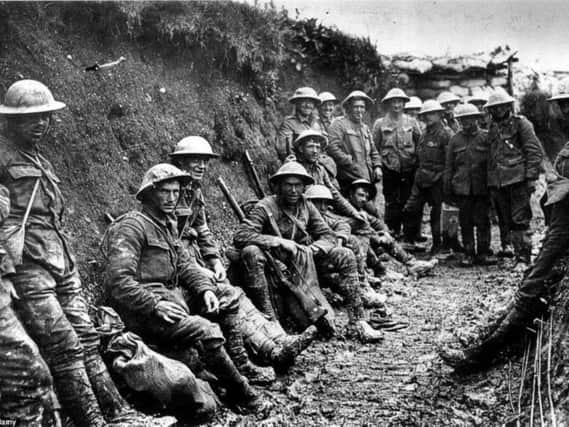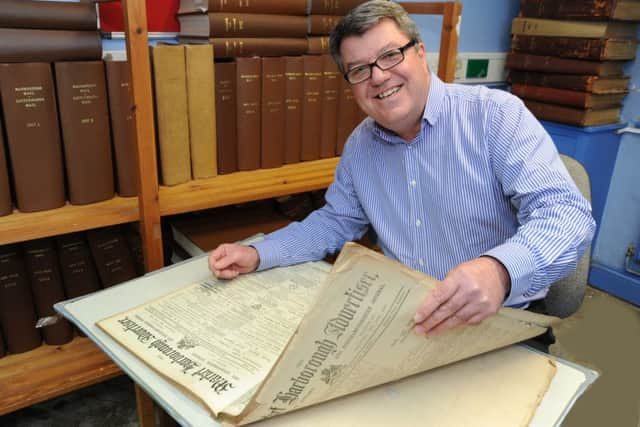JOHN DILLEY's WWI BLOG: All quiet on the Western Front in this week's paper


A good cure for insanity is to do some gardening. The skirt of a ‘well-dressed woman’ in 1917 should not be as full and wide as last year. And Market Harborough used to have pubs called The Saracen’s Head, The Axe and Cleaver, The Green Dragon, and The Rose and Crown.
All these ‘facts’ are imparted to the readers of February 27, 1917, edition of the Market Harborough Advertiser, along with a plethora of remarkable stories from around the globe – and history.
Advertisement
Advertisement
What is missing, of course, is much mention of The Great War, a conflict now rumbling into its 32nd month with hundreds of local lads either in French trenches or in other exotic parts of the world.


It is, quite clearly, all quiet on the Western Front – and everywhere else for that matter.
But the editor of the Advertiser still has to fill his six pages this week and his readers aren’t disappointed.
Virtually the whole back page is taken up with ‘a talk on old Harborough’ by H G Coales, who uses thousands and thousands of words to describe the town and its environs from prehistoric times onwards.
Advertisement
Advertisement
As well as information about the pubs in the town there is mention of street names which have changed: “In a map dated 1776, Church Street is called Little Street; High Street is called Great Street; and part of Adam and Eve Street is called Tripe Alley.


“In 1508 there was a ‘chain bridge’ for foot passengers and a ford for horses at the present Northampton Road crossing of the River Welland.”
On page 3 there is a short story about insanity quoting Dr Oswald, head of the Glasgow Lunatic Asylum, who says: “At the outset of hostilities many cases were arrested through the impelling influence of the war, but time has familiarised that effect and such patients are once more returning to the asylum.”
He concludes: “The greatest good to the disordered mind is to be found work on the land.”
Other eye-catching stories include:
Advertisement
Advertisement
*A young man from King’s Lynn who fell 200ft from a cliff near his home – and survived. “His fall was broken by jutting cliffs and rocks and he was seen to sit up after landing on soft clay.” He was rescued by two fishermen who abseiled down the cliff face ‘by means of ropes’. Not surprisingly, he’s in a critical condition.
*Another astonishing tale of survival came from Swaledale where a sheep was rescued after 38 days buried in a snow drift – and also survived.
*Less lucky was a 45-year- old man who was found dead in his ‘smouldering bed’ in Addlestone in Surrey ‘even though there was no fire in any fireplace in his cottage’.
*And finally a brief story that leaves the 21 st century reader speechless: the Mayor of Stoke Newington inquires: “Would a kind couple like to adopt a baby boy – six weeks old – a healthy youngster?”
Advertisement
Advertisement
There are also two national stories that will prompt debate on the streets of Market Harborough as they have raised controversial views in previous columns of the Advertiser: the Government has given wider powers to councils to establish more allotments and the much-hated ‘summer hours’ introduced last year will continue this year with the clocks going forward an hour on Easter Sunday, April 8.
This column is published every Monday by John Dilley on the Newspapers and the Great War website and will continue until the 100 th anniversary of the final armistice in November 2018.
My fellow researcher and De Montfort University lecturer David Penman is conducting a similar real- time project with the Ashbourne Telegraph. Check out his Great War Reports.